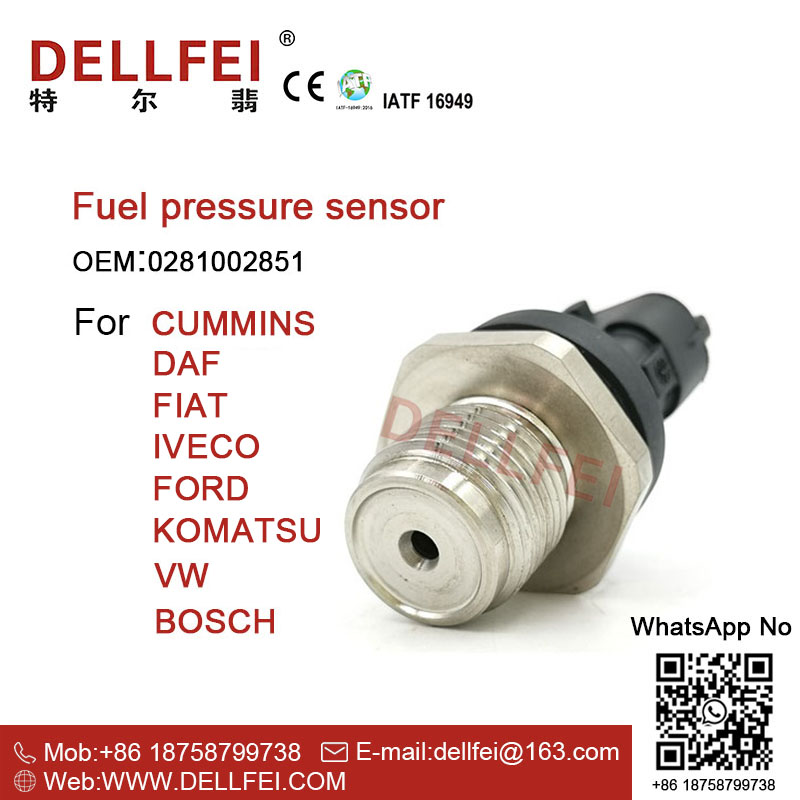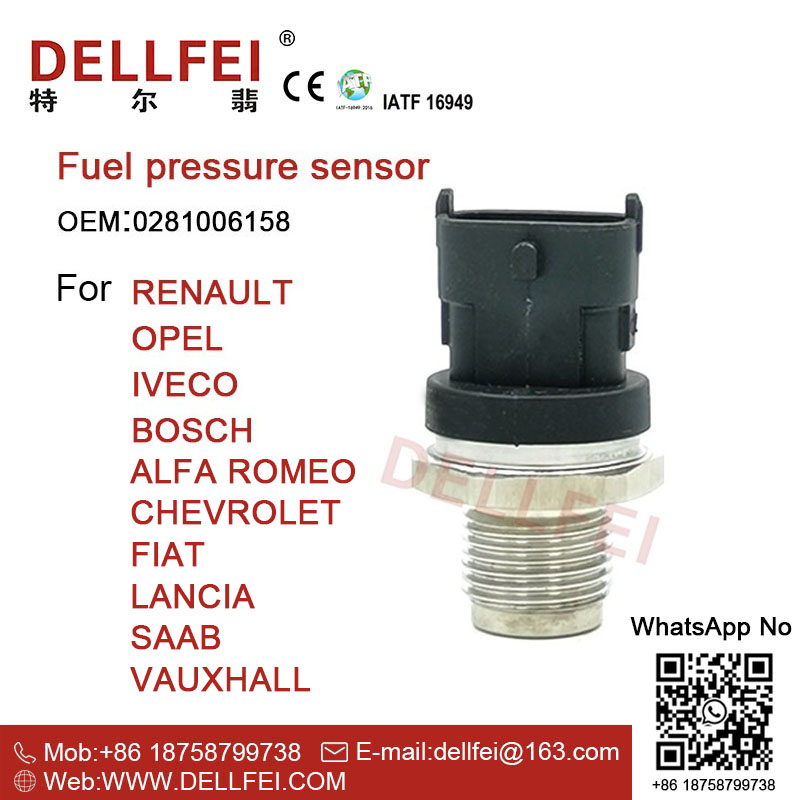Working Principle Of Pressure Sensor
October 13, 2022
Working Principle Of Pressure Sensor
Professional pressure sensors are devices or devices that can feel pressure signals and convert pressure signals into usable output electrical signals according to certain laws.
An effective pressure sensor is usually composed of a pressure sensing element and a signal processing unit. According to different test pressure types, high quality pressure sensors can be divided into gauge pressure sensors, differential pressure sensors and absolute pressure sensors.
Pressure sensor is the most commonly used sensor in industrial practice, which is widely used in a variety of industrial automation environment, involving water conservancy and hydropower, railway transportation, intelligent building, production automation, aerospace, military, petrochemical, oil Wells, electric power, ships, machine tools, pipelines and many other industries.
 1, piezoresistive pressure sensor
Resistance strain gauge is one of the main components of professional piezoresistive strain sensor. The working principle of metal resistance strain gauge is that the strain resistance adsorbed on the matrix material changes with mechanical deformation, which is commonly known as resistance strain effect.
2, ceramic pressure sensor
Ceramic pressure sensor based on piezoresistive effect, directly in front of the ceramic membrane surface, make the diaphragm produces tiny deformation, thick film resistors printed on the back of the ceramic membrane, connected into a wheatstone bridge, due to the piezoresistive effect of pressure-sensitive resistance, make the bridge produces a is proportional to the pressure of the highly linear, and the excitation voltage is proportional to the voltage signal, The standard signal is calibrated to 2.0/3.0/3.3mV/V according to the different pressure range, which can be compatible with the strain sensor.
3, diffusion silicon pressure sensor:
Diffusion silicon pressure sensor working principle is based on the piezoresistive effect, using the piezoresistive effect principle, the pressure of the measured medium directly effect on the sensor diaphragm (stainless steel or ceramic), make the diaphragm produces the micro displacement is proportional to the medium pressure, the sensor resistance change, use of electronic circuit to detect the change, A standard measurement signal corresponding to this pressure is converted and output, which is very effective.
1, piezoresistive pressure sensor
Resistance strain gauge is one of the main components of professional piezoresistive strain sensor. The working principle of metal resistance strain gauge is that the strain resistance adsorbed on the matrix material changes with mechanical deformation, which is commonly known as resistance strain effect.
2, ceramic pressure sensor
Ceramic pressure sensor based on piezoresistive effect, directly in front of the ceramic membrane surface, make the diaphragm produces tiny deformation, thick film resistors printed on the back of the ceramic membrane, connected into a wheatstone bridge, due to the piezoresistive effect of pressure-sensitive resistance, make the bridge produces a is proportional to the pressure of the highly linear, and the excitation voltage is proportional to the voltage signal, The standard signal is calibrated to 2.0/3.0/3.3mV/V according to the different pressure range, which can be compatible with the strain sensor.
3, diffusion silicon pressure sensor:
Diffusion silicon pressure sensor working principle is based on the piezoresistive effect, using the piezoresistive effect principle, the pressure of the measured medium directly effect on the sensor diaphragm (stainless steel or ceramic), make the diaphragm produces the micro displacement is proportional to the medium pressure, the sensor resistance change, use of electronic circuit to detect the change, A standard measurement signal corresponding to this pressure is converted and output, which is very effective.
 4, sapphire pressure sensor:
Using strain resistance working principle, silicon - sapphire as semiconductor sensitive element, with unparalleled metering characteristics. Therefore, the use of silicon - sapphire semiconductor sensitive elements, is not sensitive to temperature changes, even under high temperature conditions, also has a good working characteristics, very sensitive and effective; Sapphire has strong radiation resistance; In addition, silicon - sapphire semiconductor sensor, no p-n drift.
5, piezoelectric pressure sensor:
The piezoelectric effect is the main working principle of professional piezoelectric sensors. Piezoelectric sensors cannot be used for static measurement because the charge after the external force is only preserved when the loop has an infinite input impedance. This is not the case, so high-quality piezoelectric sensors can only measure dynamic stresses.
4, sapphire pressure sensor:
Using strain resistance working principle, silicon - sapphire as semiconductor sensitive element, with unparalleled metering characteristics. Therefore, the use of silicon - sapphire semiconductor sensitive elements, is not sensitive to temperature changes, even under high temperature conditions, also has a good working characteristics, very sensitive and effective; Sapphire has strong radiation resistance; In addition, silicon - sapphire semiconductor sensor, no p-n drift.
5, piezoelectric pressure sensor:
The piezoelectric effect is the main working principle of professional piezoelectric sensors. Piezoelectric sensors cannot be used for static measurement because the charge after the external force is only preserved when the loop has an infinite input impedance. This is not the case, so high-quality piezoelectric sensors can only measure dynamic stresses.






